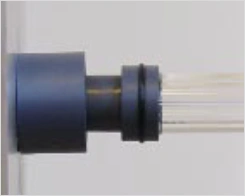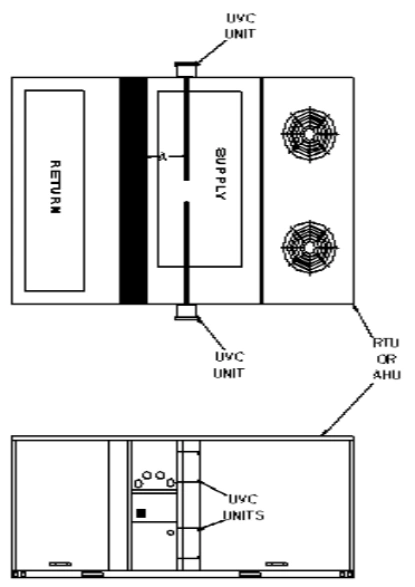UVMatrixTM SI
Unprecedented Installation Flexibility

UVMatrixTM SI systems employ a patent pending innovative system that makes them easily adapted to variations in HVAC physical installation characteristics – with no compromise in UV irradiation. When unusual dimensions are encountered UVMatrixTM SI racks simply adjust to the custom width of the system.



What is UV light?

Germicidal Action of UVC
UVC damages DNA/RNA of microorganism ( Virus, bacteria, fungi) Microorganisms inactivated, i.e., become unable to replicate

Microbial Dose Response to UVGI Calculation
S = e-kIt, S = e-kD
S = Survival Rate
k = Deactivation rate constant (cm²/µW-s) - UVGI Rate Constant
I = Average Intensity Field (µW/cm²)
t = Time of exposure (s)
Lt = D = “dose”( µJ/cm²)
Microbial Response to UVGI - k
k varies by orders of magnitude Smaller k → more resistant
Where to Install
- Install lamps horizontal to coil whenever possible
- Try to keep UV lamps between 10”-20” away from coil surface

Installation
Unprecedented installation flexibility
The Systems employ an innovative system that makes them easily adapted to variations in HVAC physical installation characteristics – with no compromise in UV irradiation. When unusual dimensions are encountered the racks simply adjust to the custom width of the system.

T3™ Thermal Transfer Technology
Optimize Lamp Surface Temperature and Maximize UV Output..
- Insulates the lamp from the cold air stream allowing it to run at its optimum temperature
- Increases output upwards to 40%
- Protect UV Lamp from breakage, come with a protective Quartz Sleeve

